In order to achieve mindful design, you have to ensure that it serves you and your needs! Looking for five essential and immediate changes to the interior design elements at home to alleviate anxiety, stress and overwhelm? Keep reading to find them all out!
Find your om at home and create mindful design
I have two main calls to action in my life… Interior design and teaching yoga. Being empathic and disciplined drives me to want to help others while taking actionable steps to make a positive change in peoples “insides” and outsides. 🙂 These 5 quick tips are a sample of what I’ve come to know over my nearly 20 years in these fields.
For many years people have been asking me how I integrate these two disciplines because at times they seem so disparate. The answer was quite simple! I blend the positive therapeutic elements of my teaching with practical design expertise to add value to every project I touch.
Creating more mindful design & holistic spaces to take you from overwhelmed to OM.
Tip #1: Assess the Light
Assess the natural and supplemental light in your rooms. Move lamps in and change your lightbulbs.
The amount and quality of light in your room greatly affects not only your mood but your appetite, your energy levels and circadian rhythms. Notice how much natural light you get in the room. Depending on what geographic direction you face, you could be getting only minimal sunlight if your windows only face north. Window coverings that cover the glass opening also can dampen the mood in the room and have an effect on the colors and tones in the room. Color in a west-facing room can look completely different than that same color in a north-facing room.
When it comes to artificial light, Fluorescents are specifically a poor quality of light to support healthy elements in your life owing to the blue light they emanate. Firstly, think about layering your light so that you aren’t dependent only on harsh overhead lights. Layer in a table and floor lamps to give supplemental lighting for tasks or ambience. You’ll notice what a difference it will make to the overall tone and feeling to your space.
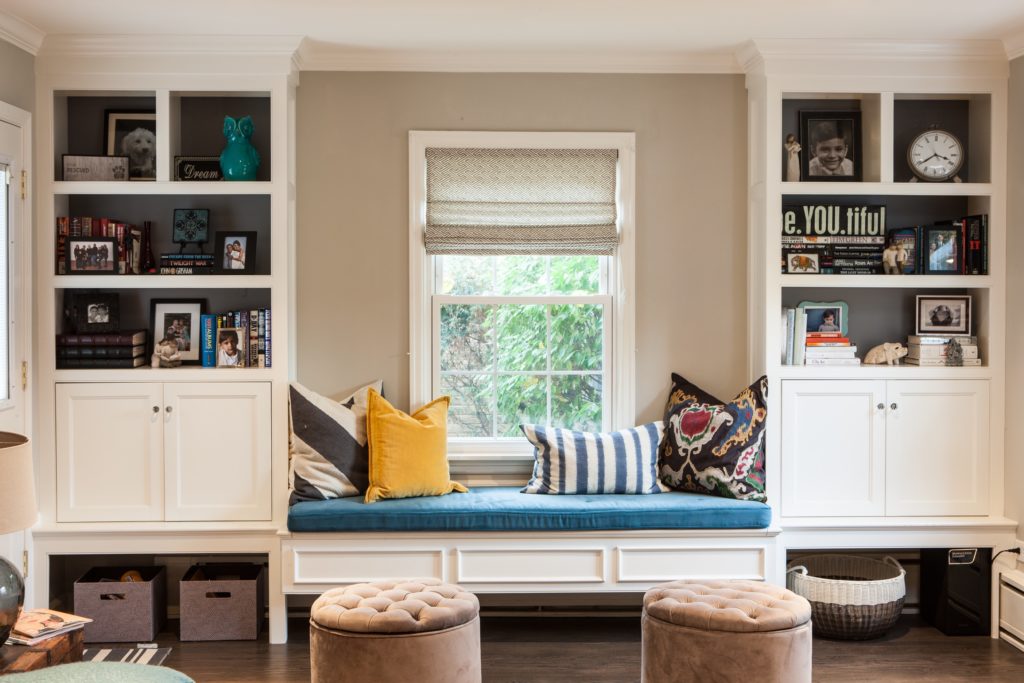
What type of bulbs should you choose?
The type of bulbs in your light fixtures can be easily changed for a quick tune-up of the mood in the room. Try to use warm light incandescent bulbs. If you want the benefits of LED lighting look for bulb “colors” of 2700k which is similar to warm bright light. This color temperature measurement is usually listed on the bulb packaging. The higher the number moving above 3000k starts to get very white and bright, for work environments or task lighting.
One extra hint for mindful design – think about what is OUTSIDE your windows
- are trees/shrubs blocking natural light from outside? – trim
- staring at a brick wall? plant something to shield the view
Tip #2: Change the Flow
Analyze the flow of your rooms – move furniture around and buy key missing pieces.
When I say FLOW I not only mean the space plan, but also the inherent energy and usefulness of a room. Mindfulness should inform every detail in your design.
Do you frequently find yourself having to walk around pieces of furniture or bumping into the corners of your sofa or chairs?
Does your room feel closed off versus welcoming because of the furniture layout? What about the shape or scale of the pieces of furniture? Are they all square and boxy or round and curvy?
For example, if you have a room in which the sofa back is facing the main entrance of the room… Putting it against another wall or trading it for two lounge chairs will open the flow of the room, and make it more welcoming. That will help you to achieve mindful design! You can also replace a rectangular coffee table with a round option to create flow.
If all items in a room are too similar in shape or size, the room can get stale and lacklustre – mix it up a bit so it creates interest and continuity.
What about missing pieces of furniture? Like a small table to put a drink down, but you don’t have one or it’s too far away to be useful? Not having the right furniture or accessories where you need them when you need them add up and cause us discontent.

In mindful design – there is no place for obstacles that steal your energy
And finally, there are those smaller annoying offenders we all have – the broken drawer, sticking lock or a creaky spot on the floor… At first, we don’t think much of them. Then we start to create work-around for them. For example, bang it, then wiggle it a bit, then it will open! These obstacles steal our energy and affect our efficiency to get things done.
Resolve these things to take your potential back. Create a punch list of these items and knock them out one by one. You can either take them on yourself or hire a handyman to complete them.
Something as simple as a can of WD-40 can go a long way to get that drawer or lock running smoothly! If not, a drawer glide can be replaced, and the squeaky board can be re-nailed. Then it doesn’t continue to heighten our discomfort in our own homes.
Tip #3: Clear the Clutter
Solve the clutter & disorganization – re-purpose areas creatively and create white space.
Somehow whether we intend to or not, the stuff of all sorts starts to collect around our homes. Bookshelves are notoriously weighed down with the job of collecting pieces that we abandon. It also holds ‘stuff’ that we just don’t know where else to put it. Coffee tables with shelves are a carrier of old magazines, too many remote controls, or books we’ve never read. To make your design more mindful, you should keep a hard look at those places.
Creating a new purpose for a space in your home can alleviate the clutter, beyond just “Marie Kondo-ing” your home. For example, reserve a wall in your entryway to create a mudroom or mini mudroom with shelving with doors and cubbies or drawers to hold extra shoes, coats and bags. The space you use doesn’t always have to conform to what it was originally intended for. A closet can be a small desk area, or an empty wall in your open living room could be a communication center.
Re-thinking and using your spaces creatively gives frequently used areas purpose so that items are out of view and they don’t become a visual distraction.
To achieve mindful design, arrange items on your shelves with purpose. Use books strategically as props for special objects, or stands for a lamp. Layer your books by size, or give them visual organization by arranging them by color.
Leave “white space” on your shelves to give the feeling of more space and clarity for your chosen objects. Yes, that may mean you have to donate some items! If they’re all objects you really love, consider rotating them seasonally, hiding some of them away when it’s ‘off-season’ for them.
Tip #4: What does your Room Sound Like?
Add softening features.
Sound is one element that is broadly overlooked by most when it comes to designing a room. The surfaces in your space will deflect or hamper (absorb) noise depending on their type and material.
Shiny hard surfaces will deflect the most sound, while hard wooden surfaces will still reflect sound, not quite as much as metal or glass items.
Take note of your flooring – is it ceramic, wood, rug or broadloom. How many windows are in the space, and what materials are your furnishings composed of? Higher ceilings may also contribute to a ‘hollow’ echoey feeling.
If you have large surface areas of ceramic or wood, use area rugs to dampen sound. Even a runner in a hallway can make a difference. Large empty walls or bare windows are wonderful places to add artwork or fabric window coverings that will soften the space and absorb excess noise.
The more prominent your fabric furnishings in the space are, the more they absorb excess noise/sound. Take the opportunity to add accents like decorative pillows or a throw blanket to add the extra subtle touch to make your space not only more comforting, but less cacophonous.
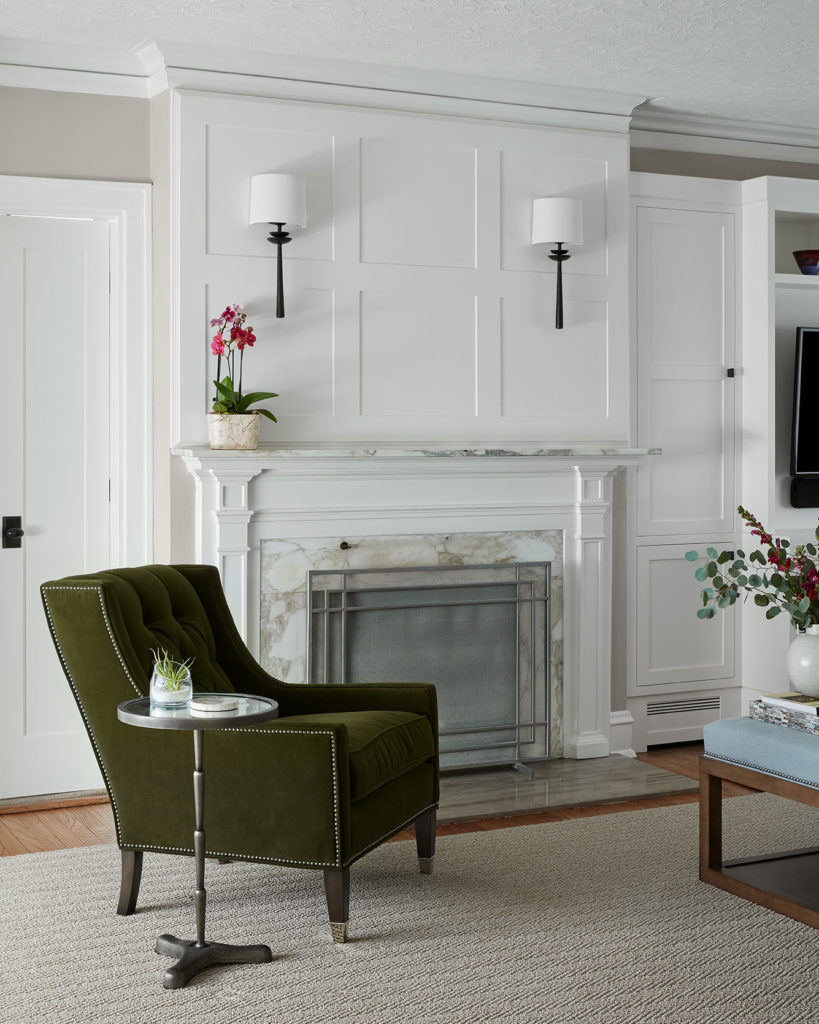
Tip #5: Colors and Textures
Are the colors & textures right for you? Paint your walls or ceiling and add comforting textures.
A can of paint color can be chameleon-like in space depending on the light source it’s windows are facing. The shade of color you choose can also definitely impact your mental state. Textures also play a role in creating comfort and visual excitement based upon how they are used.
Let’s take vibrant, bright colors such as yellows, reds, and orange. These colors are thought to stimulate exciting emotions, possibly best used for a home gym or playroom. In contrast, cool colors similar to what is found in nature, such as blues and green tones promote calmness and tranquillity.
Whites are also associated with calm, purity and tranquillity. However, whites can be extremely tricky to work with because they inherently have so many different undertones. Undertones range from yellow, to purple, blue, pink or green.
One of my favorite warm whites is a color by Benjamin Moore called Swiss Coffee. It has a soft creamy undertone which makes lamp light and your skin glow.
All white homes are incredibly popular right now, with a gallery type effect, that creates a clean, minimal interior. However, a cool stark white can be agitating. If you want a more serene atmosphere, stick with warm white color selections.
To explore how color changes depending on the directional exterior light source, let’s take a room with north-facing windows. The weak natural light offered to a north-facing room may be psychologically depressing and deprives rooms of sparkle and energy. To give your north-facing room some pop, choose warm pale colors! If possible use these rooms as more dramatic spaces with dark moody colors. If you use white, make sure it’s the warmest white possible!
How to decide on the texture for your mindful design?
Textures are so important in making your space a respite, and a place where you can unwind and relax. Some fabrics can be rough or scratchy to the touch, and not ideal to cozy up to when you want to sit for any length of time. Mohair fabric while it seems similar to velvet is actually quite ‘spikey’ to the touch and may cause you to itch from the pile of the fabric. The breadth of stain-resistant fabrics is also excellent these days. It’s also really necessary for all of us who love red wine, have kids or pets.
Just one watch out with these fabrics is that the ‘hand’ of the fabric, the way the fabric stiffness or texture feels to your touch can be on the rough side as it is manufactured with plastic-like resilient fibres. Make sure you get a sample swatch of a fabric before you commit it to your new piece of furniture!
Along those same lines, the way a piece of furniture is fabricated can also affect your comfort. While down feathers give a chair or sofa a softer seat, it can also be an allergic irritant for some. The small pointy feathers that occasionally shed from a piece of furniture can also feel like small needles on the skin.
With the advancements of upholstery materials, there are options to alleviate these potential discomforts, with the use of foam, batting and alternative down products.
Want to experience a mindful and holistic approach to design? Get unfiltered advice, recommendations and a preliminary design plan to help you create the sacred place you’ve been craving for – book the consultation with me!
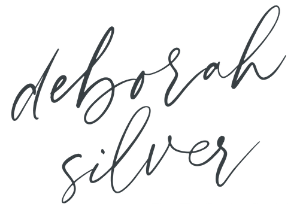

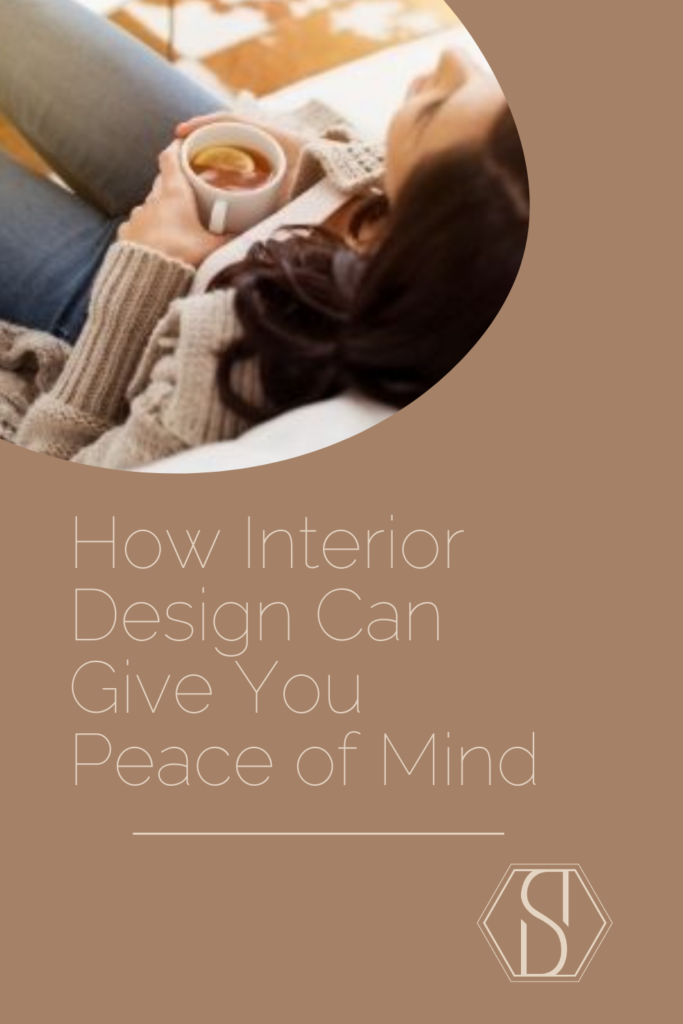

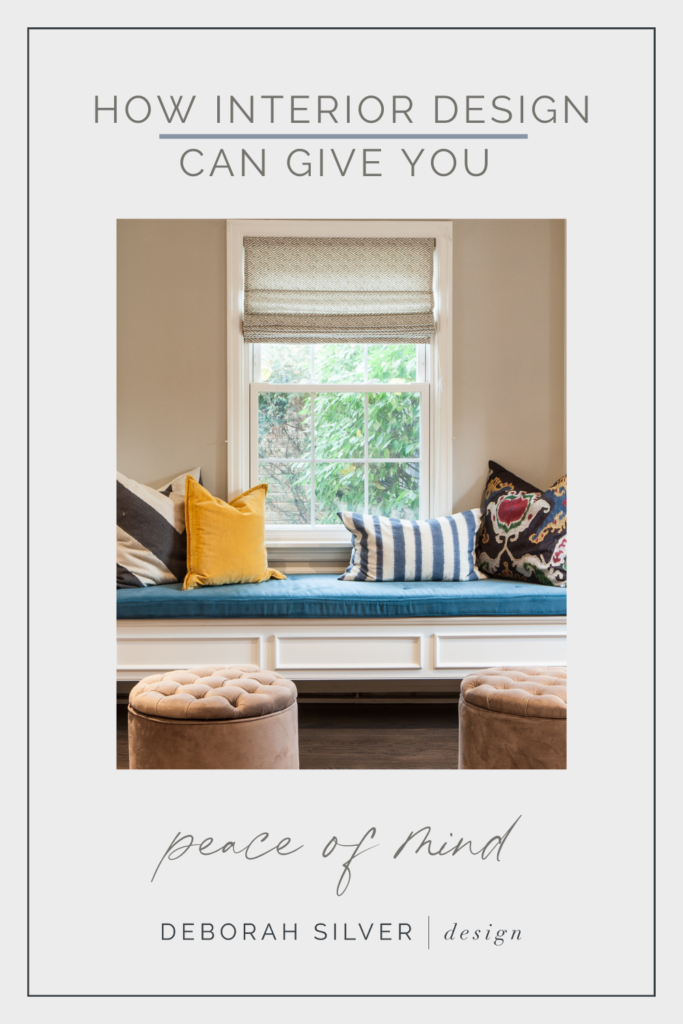
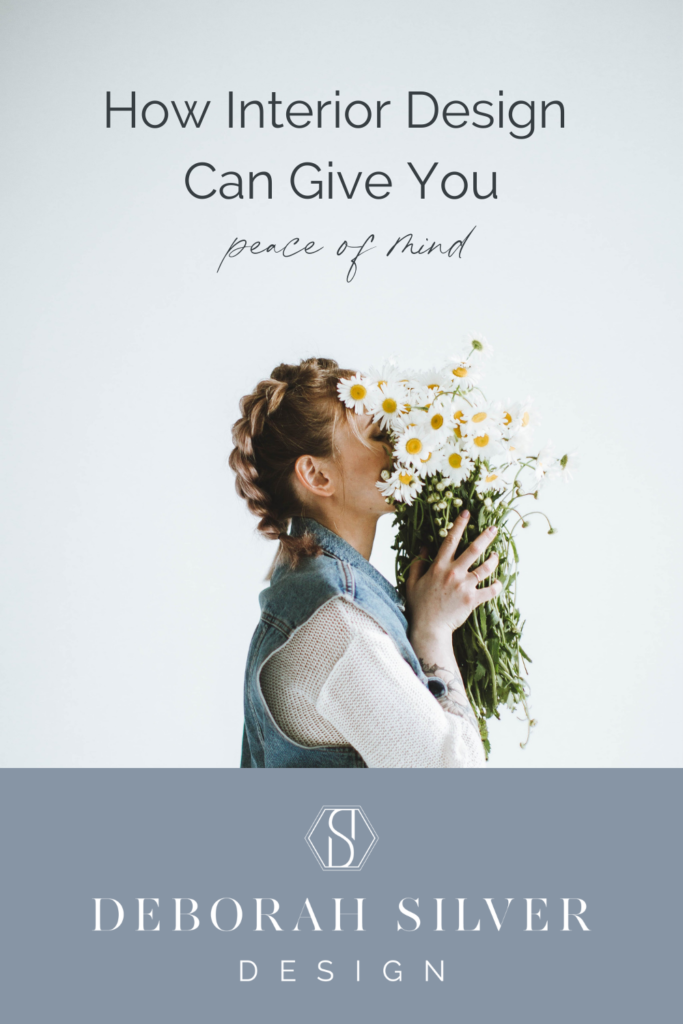
Add a comment
0